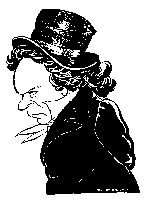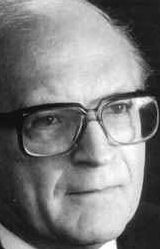My Research Story
|
Like Ludwig van Beethoven's, my creative life falls into three periods,
but unlike his, my middle one was perfectly fallow : an unsightly hiatus
mars my list of publications in the seventies,
the hippie decade.
Rather than trying your patience with some unlikely explanation for
this shameful blot on my escutcheon, I shall
concentrate on outlining the contents of the first and third periods.
Roughly speaking, the former is abstract and theoretical, delighting
in concepts and valuing form over substance,
while the latter is concrete and computational, using modest tools
and preferring ugly facts to shapely froth.
|

|
This points to a second
difference between Ludwig and myself : while he stubbornly followed his
genius, I found nothing better to follow than the fashion of the day.
In the 1950's the accepted wisdom was that mathematics was a deductive
science based on axioms. Here at UBC (where I started and ended my career),
there were still some dinosaurs who took pride in not knowing what a Banach
algebra was, but the in-crowd cultivated general topology and ring theory.
Robert Langlands, a fellow student, occasionally liked to organise informal
seminars to plough through something he wanted to learn. In the summer of 57
he had chosen Jabobson's new book on the structure of rings -- just my cup
of tea.

|
That autumn, at McGill University, I met a very different kind of mathematical
animal: Hans Zassenhaus, who could talk rings around any ring theorist, and in
the next few breaths, write down a complete proof of the formerly first, but
now second, inequality of class field theory (using L-functions). Now I knew
what I wanted to do: become like that, but clean up the act, i.e., base all
that on abstractions. I was relieved to hear, in a talk of Tim O'Meara, that
there were such things as local and global fields -- neatly axiomatized. That
gave me the green light to look into things arithmetical. Little did I suspect
that my clean-up fantasy was actually being realized by people like John Tate
and André Weil, not to mention the gathered might of Bourbaki. My
supervisor Zassenhaus did not tell me (of course, he knew I was not in that league).
Instead he gave me something to do around envelopping algebras of Lie
algebras. I can't remember exactly what it was, but it did eventually lead
me to my thesis: central simple algebras constructed around purely inseparable
field extensions (via an appropriate Lie-algebra of derivations). That
mediocre work figures as items [2] and [3] in my list of publications.
|
I had followed Zassenhaus from McGill through Caltech to Notre Dame du Lac in
Indiana, and didn't know whether I was coming or going. At Caltech, Olga Taussky
had made me present a paper by Schur in the slick functorial mode (which was
not her own); at Notre Dame, Louis Mordell (who was there temporarily) heaped
scorn on André Weil for having done just that with "his" theorem, and Alex
Heller showed up with tales of the miraculous Grothendieck. I wanted to go to
Paris, but Zassenhaus suggested Hamburg, his former home base and my native
city, which I had not seen since early childhood. There were Artin, Hasse, and
Witt (and other greats farther afield), the mathematical institute was small
and congenial. It was culture shock for me: my conversation partners (for instance
Harder and Knebusch) were still students, but surefooted in anything from harmonic
analysis, over the cohomology of idèles, to Dynkin diagrams, sheaf theory,
the latest simple groups, etc... amazingly non-specialized. Now I was in the very
crucible which had formed my teacher Zassenhaus, but this did not suffice to
make me a really good mathematician: I was too busy running after what the others
had just understood and/or invented.
(To be continued)

